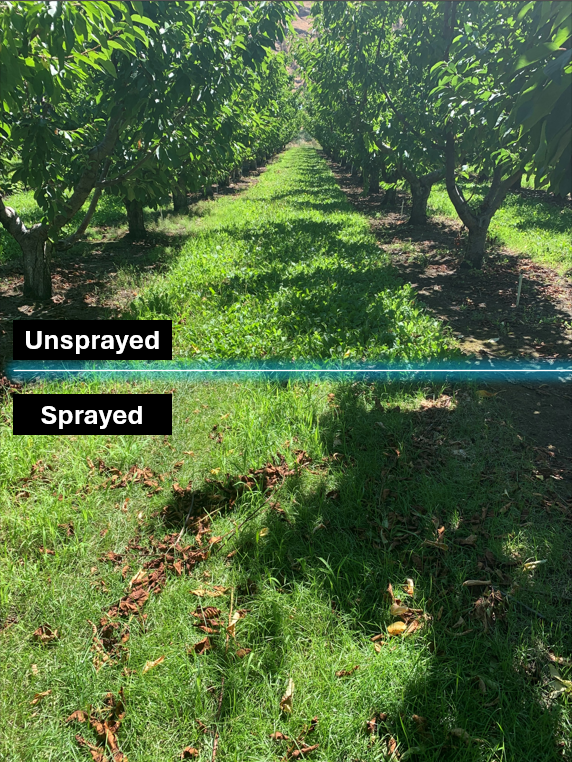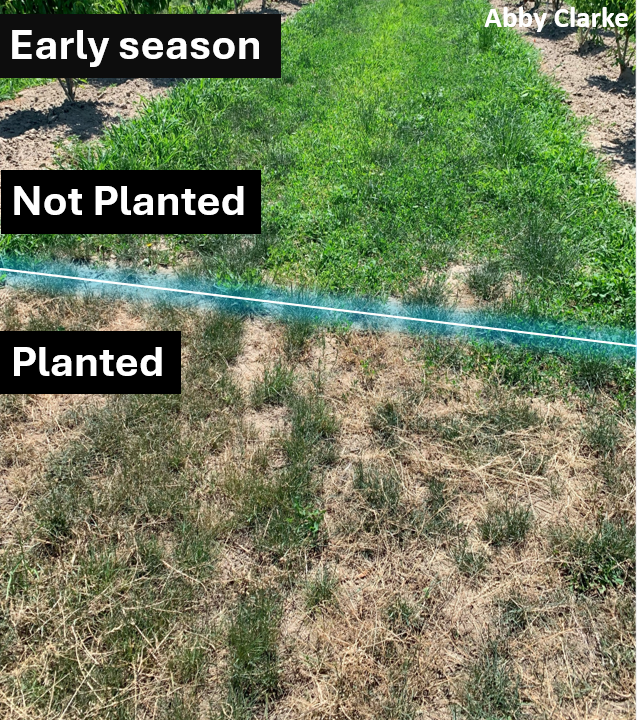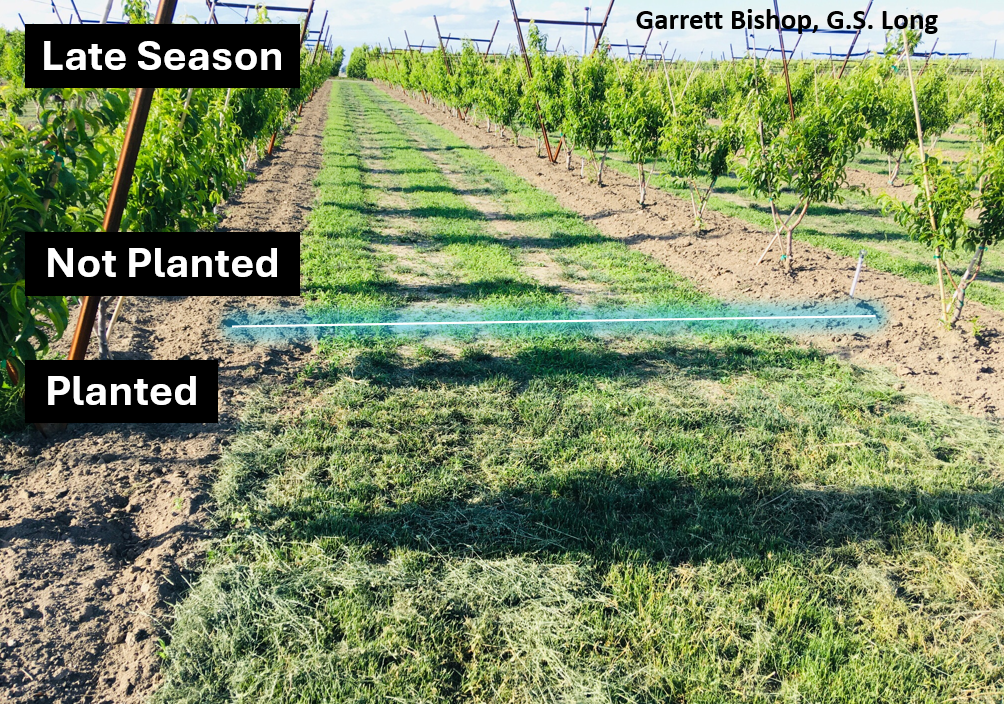Printable Handout – Station 4 Groundcover Management to Control X-disease Vectors
Problem
Broadleaf weeds commonly found in orchards serve as hosts for the leafhoppers and X-disease phytoplasma, promoting disease spread.
Project Goal
Investigate groundcover management practices in orchard drive rows to reduce X-disease vector populations.
Site: Cashmere, Yakima
Herbicide: (summer contact application, fall pre-emergent application)
- Contact AI: Clopyralid (e.g., Stinger, Spur)
- Pre-emergent AI: Pendimethalin (e.g., Satellite HydroCap, Prowl H20)
Findings: Significant effect on C. m. reductus, reduced by up to 50%.*
*Although few C. reductus in Cashmere 2024
Site: Pasco
Grass Planting: Tilled sections and planted in fall. (Commercial 60:40 mix; perennial ryegrass and creeping red fescue)
Findings: After first year, ~50% reduction of leafhoppers compared to the control. Grass is also poor host of the X-disease phytoplasma.
Thank you to our funders!
WSDA Specialty Crop Block Grant
USDA-ARS
Washington Tree Fruit Research Commission
Oregon Sweet Cherry Commission
Contact
Tobin Northfield, WSU Associate Prof.
Dept. of Entomology
tnorthfield@wsu.edu
http://tfrec.cahnrs.wsu.edu/northfield/



